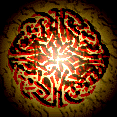Celtic Language
The Celtic language developed from a few different sources back in the dawnime, mostly origniating from the similar languages of the initial four clans. The language was blended together as the zoats taught the chieftains a common tongue for the land.
The pronunciation of the words in the Celtic language is slightly different from the other main stream languages of the Old World, so here is a guide on the pronunciation on the most commonly used words in this book.
Tír na nÓg - tear nan oge
Eriu - air-ee-ooh
Laighean - lie-an
Mumhan - moo-an
Chonnacht - kon-act
Dún - doon
Dubh-Linn - duv-ling
Dún Bhiogaire - Doon Veug-ar-ah
tuathaí - too-ah-he
tuathamhóir - too-ah-ha-vor
Cill Mhaintáin - kill wan-tawn
listramór - liss-traw-more
trábháin - traw-wawn
Dún Féirste - doon fair-ash-ta
Choillmharnach - queel-var-nock
Scór-crinach - score-creen-ock
Liscrannagh - liss-cran-ah
Uisneach - ooh-eesh-nock
Portholóin - port-ole-oyn
Cessair - sess-air
Nuada - Noo-ah-da
Sláine MacRoth - Slawn-yeah Mack-rot
Níamh - Neeve
Medb - Maeve
Cúchulainn - Koo-kull-ann
Daingean - dang-en
Finegas - finn-eh-gas
Cumhal - coo-al
Fionn MacCumhal - Fyonn Mack-Coo-al
Morraithe - Marr-ah-heh
Hugh MacNeill - Hugh Mock-Nail
Fír Ulaid - fear ull-ed
Ogham - oh-am
Diancecht - dee-an-kekt
Beann - be-own
Macha - macka
Danu - dann-ooh
Lugh - lug
Dagda - dog-da
Celtic Writing
Although many druids know how to write the conventional way with the letters of the common tongue of the Old World, the main form of writing used by the Celts is ogham. Ogham is a simple an quick way of writing, and is based on a straight line with dashes on it. The amount of dashes dictates what letter it is, for example A is one full dash, B is a half-dash going down, G is two full dashes on a slant etc., this is shown below with the ogham alphabet.
